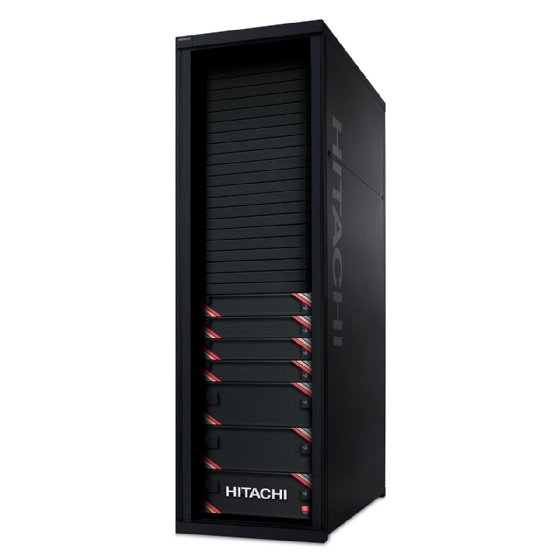
Getty Images/iStockphoto
Hitachi Vantara simplifies hybrid cloud storage
Hitachi Vantara is now providing customers a path to the hybrid cloud with software-defined storage and colocation. It also unveiled a new midrange storage offering.
Hitachi Vantara is looking to ease hybrid cloud deployments while increasing storage performance and scale.
On Wednesday, the vendor added new capabilities to its block storage offering, Virtual Storage Software Block (VSS Block), and introduced its Hitachi Cloud Connect, giving users on-premises performance and reliability along with access to public cloud services. The company also introduced Virtual Storage Platform (VSP) E1090 to its midrange storage portfolio.
The new products and services are designed to provide a more seamless experience across on-premises and cloud environments, enabling the flexibility to access data from anywhere at any time, according to Radhika Krishnan, chief product officer and general manager at Hitachi Vantara.
"We're addressing [the push for flexibility] using a combination of products and services that, irrespective of where it's deployed, can understand how the application is performing and come up with recommendations," she said.
Software-defined for hybrid cloud
Hybrid cloud, which combines on-premises and public cloud environments, is how enterprises are building and will build infrastructure going forward, according to Eric Burgener, an analyst at IDC. But the approach also introduces complexities, including different interfaces that require different skill sets based on how they are deployed, making it difficult for IT teams adopting hybrid cloud to manage their infrastructure effectively.
Hitachi's VSS Block is a software-only version of the vendor's Storage Virtualization Operating System (SVOS), the OS used for VSP storage systems, Burgener said. VSS Block may help customers overcome some of the storage hurdles hybrid cloud deployments introduce by having the same OS throughout.
"This means that if you know how to manage SVOS on a Hitachi Vantara VSP, you pretty much know how to manage it in the cloud," he said. "If you're running VSS Block in the public cloud, you get exactly the same enterprise-class storage management functionality that you get on your Hitachi VSPs."
Krishnan said that to give higher performance and scalability, along with high data availability, to VSS Block, Hitachi added its Polyphase Erasure Coding as an option. Erasure coding is a data protection method that breaks data into redundant fragments in the event of a drive failure. While erasure coding consumes CPU resources and takes a toll on latency, Hitachi's Polyphase Erasure Coding is designed to strategically store data fragments more efficiently.
Using VSS Block, customers will have up to 3.8 petabytes of software-defined storage capacity, which is ideal for customers running applications such as those from SAP or Oracle.

Connecting to the cloud
Utilizing a single OS will simplify hybrid cloud storage deployments, but customers will still encounter issues like performance, security and egress fees when accessing public cloud services. Cloud Connect enables users to use VSP storage speeds and reliability, cloud compute and scalability without the egress fees, according to Krishnan.
Through a deal with Equinix, a data center and colocation infrastructure provider, Hitachi customers can use its VSP in a co-located data center adjacent to a public cloud data center, Krishnan said. By co-locating next to a nearby data center, users won't see a performance drop when running applications in the cloud.
"[Users can] attach a compute instance that's running in EC2 or within Google Cloud [for instance] and attach it to a VSP storage that's sitting in that co-located data center," she said. "You get the same value propositions while at the same time being able to take advantage of some of the cloud offerings."
Move to the midrange
Hitachi also unveiled a new offering in its midrange VSP E-Series portfolio, with the 2U, all-NVMe VSP E1090. The vendor claims performance of 8.4 million IOPS and latency of just 41 microseconds.
"Hitachi uses much of the same hardware and software technology across the E-Series and the VSP, making them both very reliable, Burgener said, adding that the midrange storage market is the largest external storage market segment, with a five-year compound annual growth rate of 7.0%. "And Hitachi offers a 100% data availability guarantee across those systems."
Krishnan said that through the Hitachi Virtual Storage Scale Out, users can scale the E-Series by mixing and matching almost all of Hitachi's midrange nodes. This new feature supports up to 65 nodes and up to 130 controllers.
Mixing and matching different systems isn't unique to Hitachi; however, it does give Hitachi customers flexibility in both the midrange and high-end storage systems, Burgener said.







